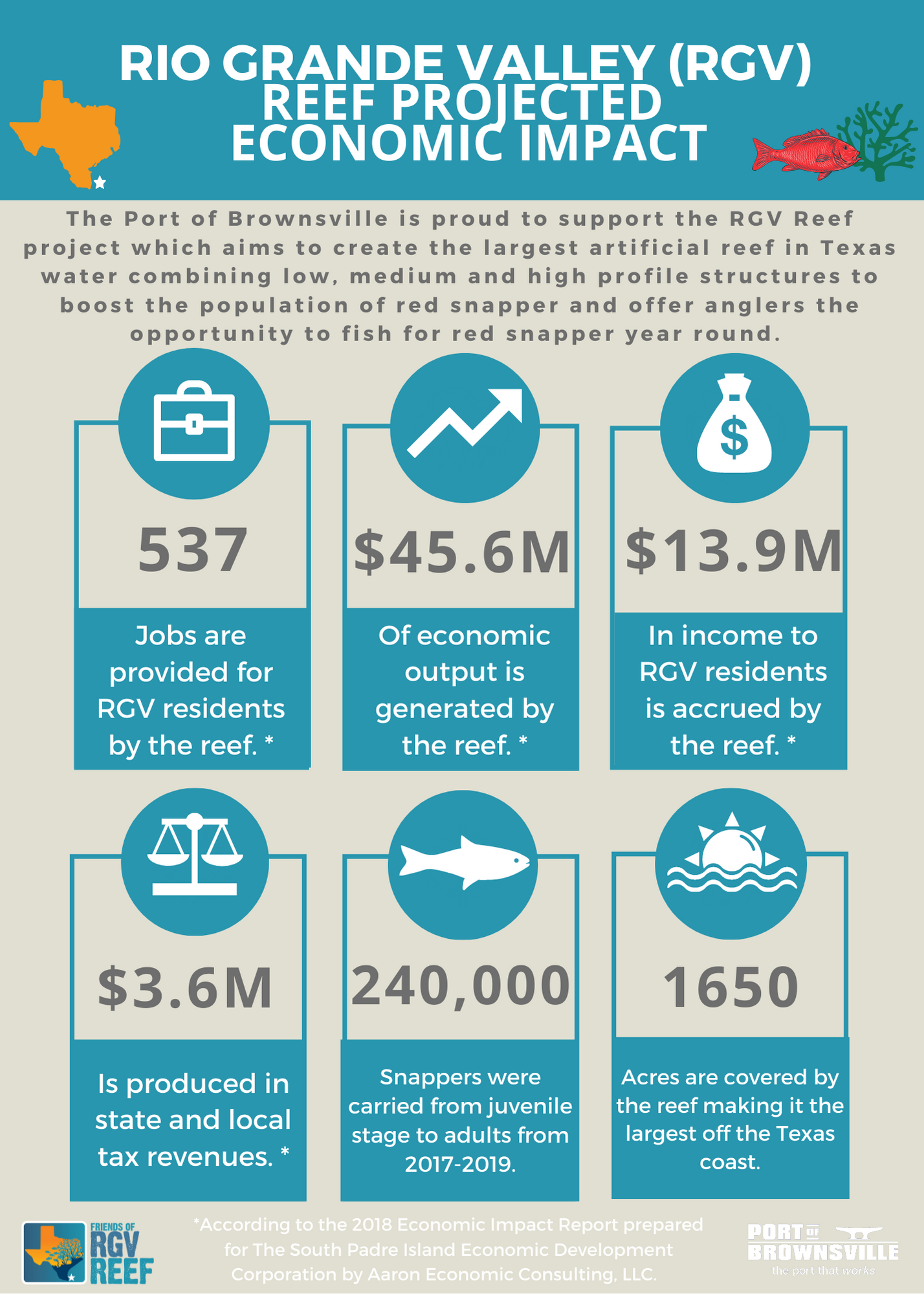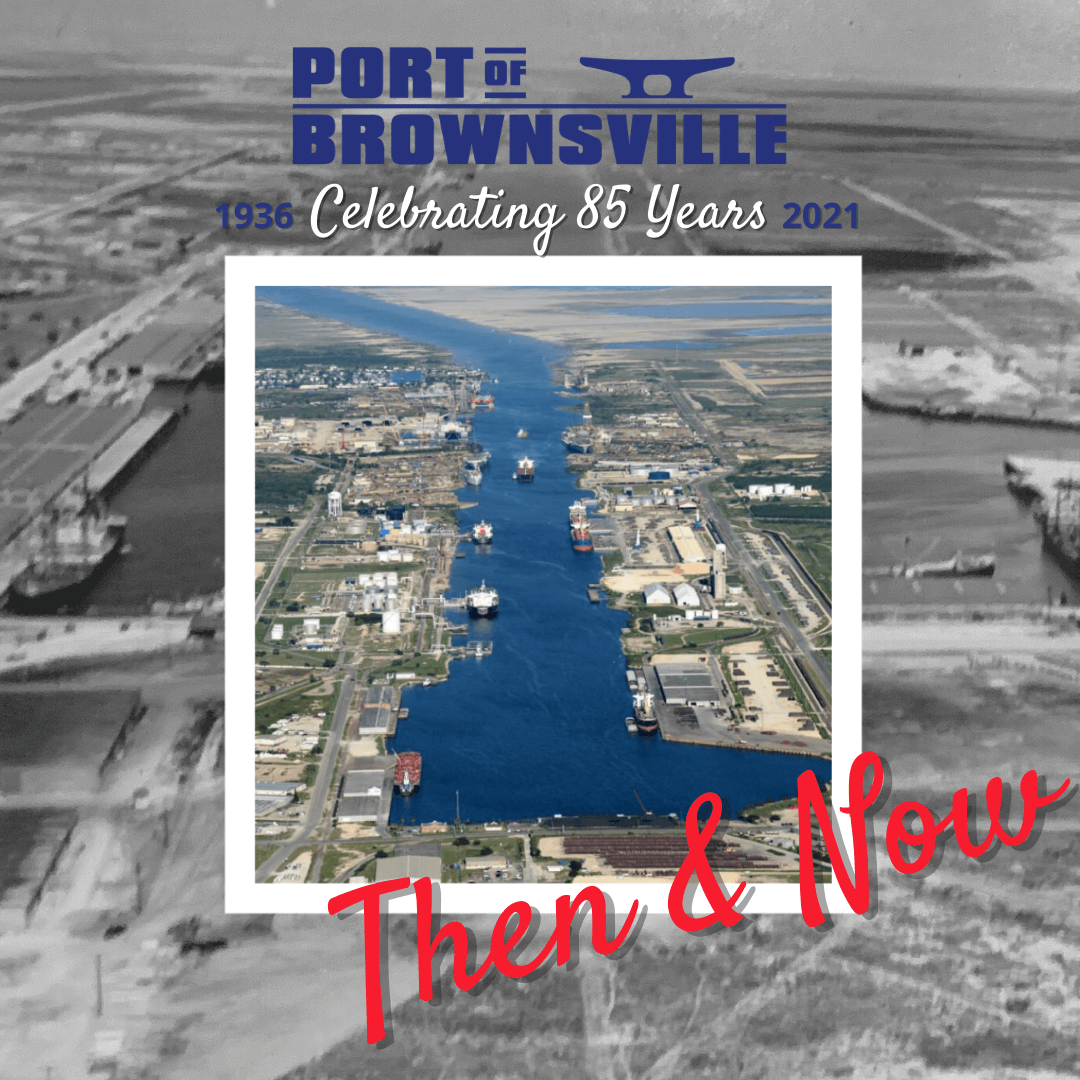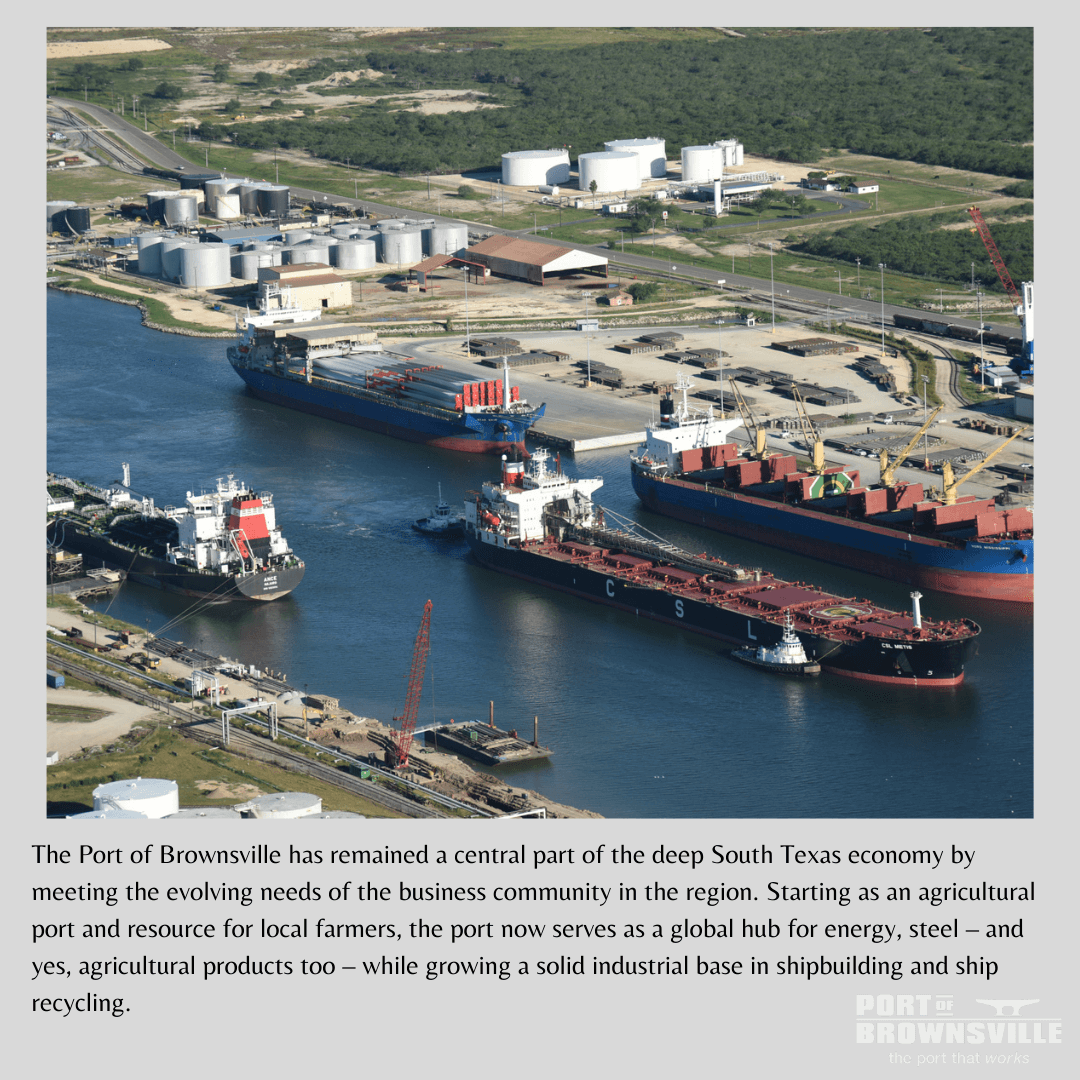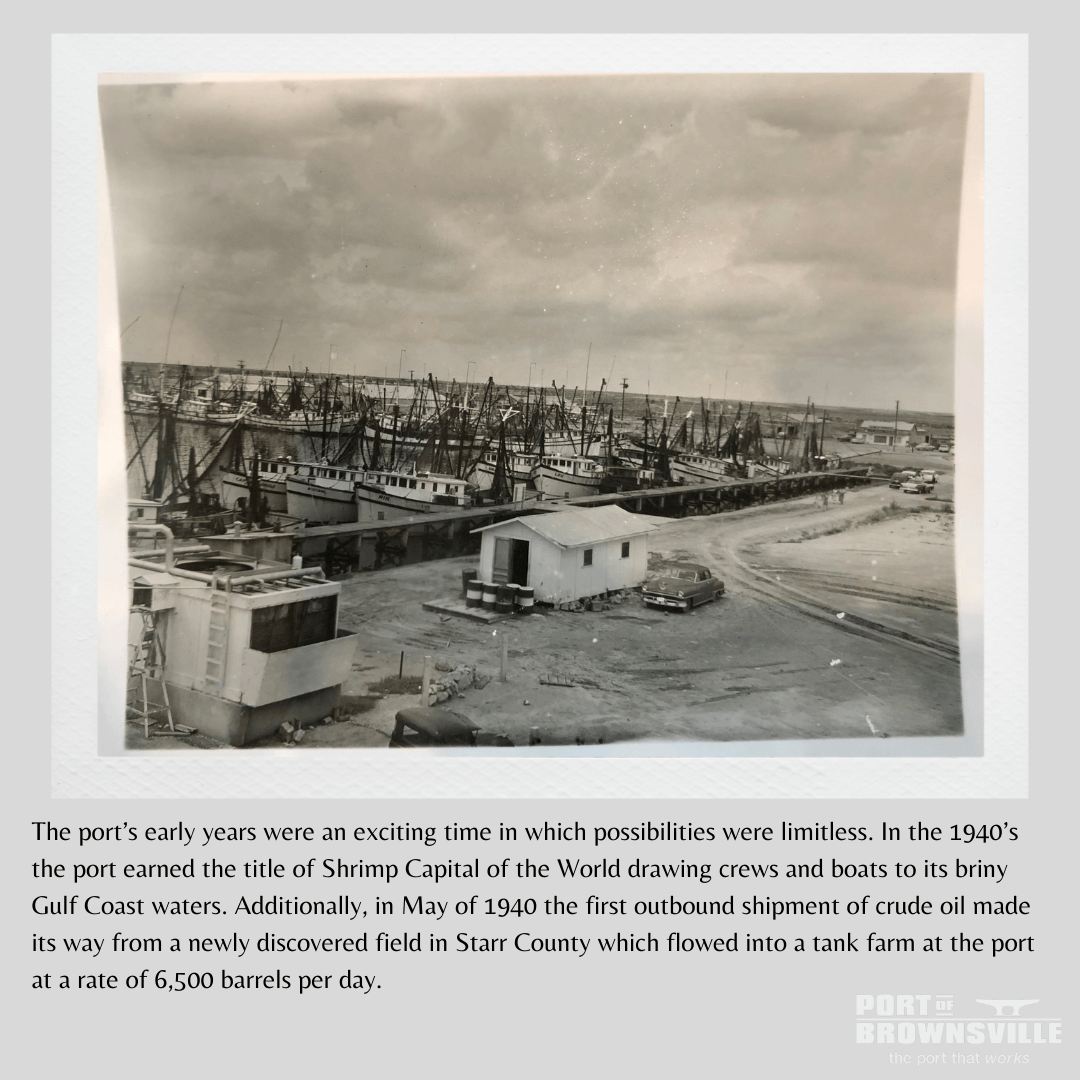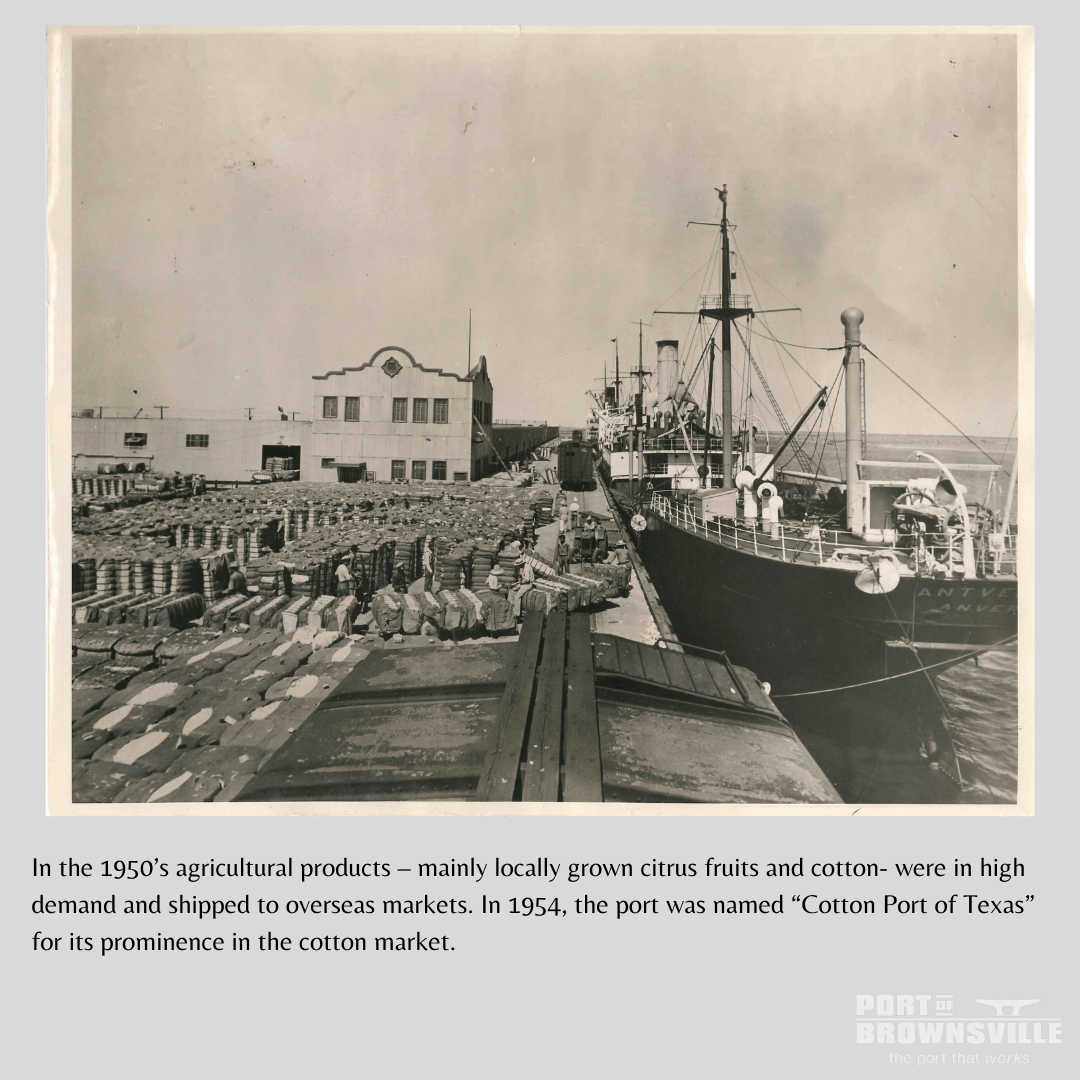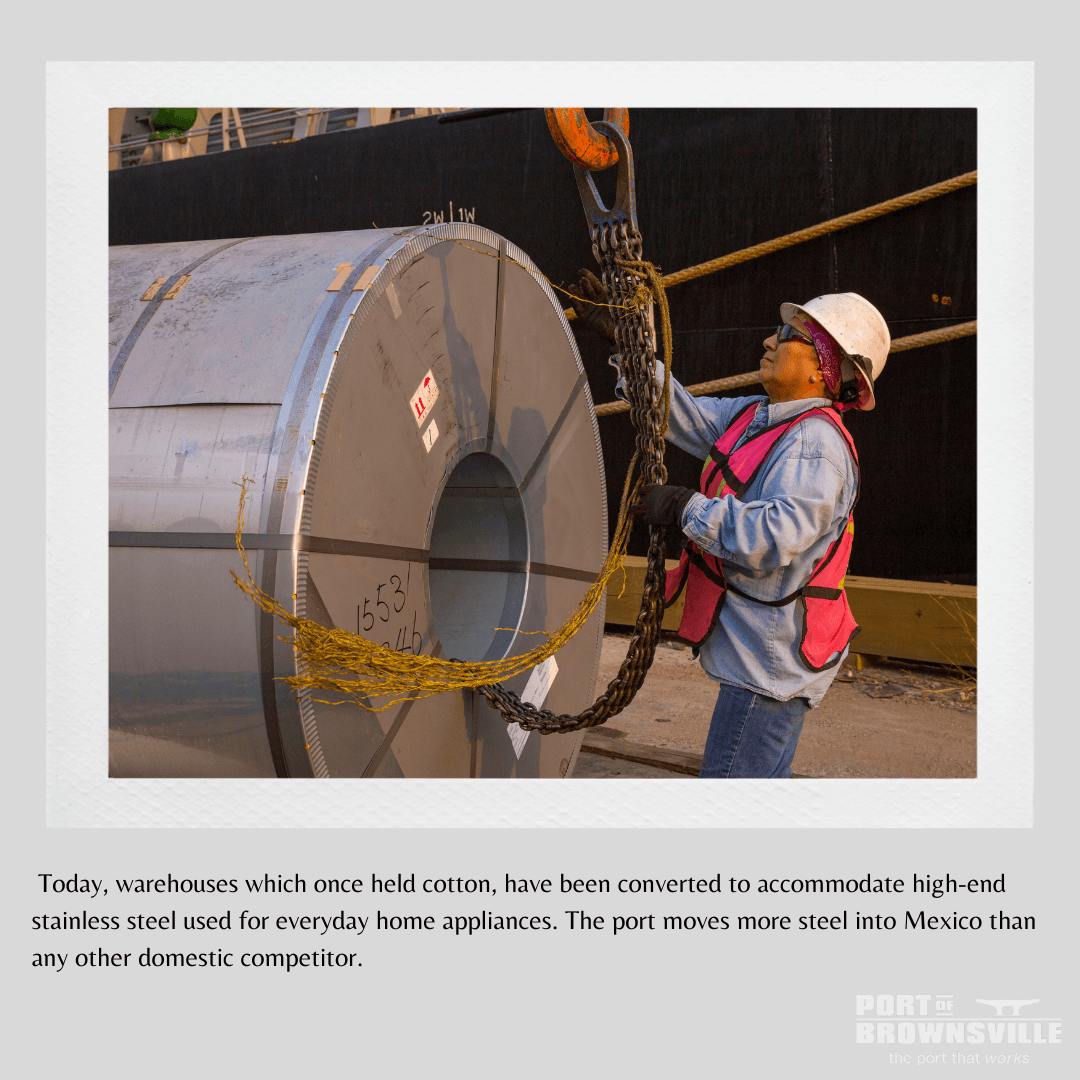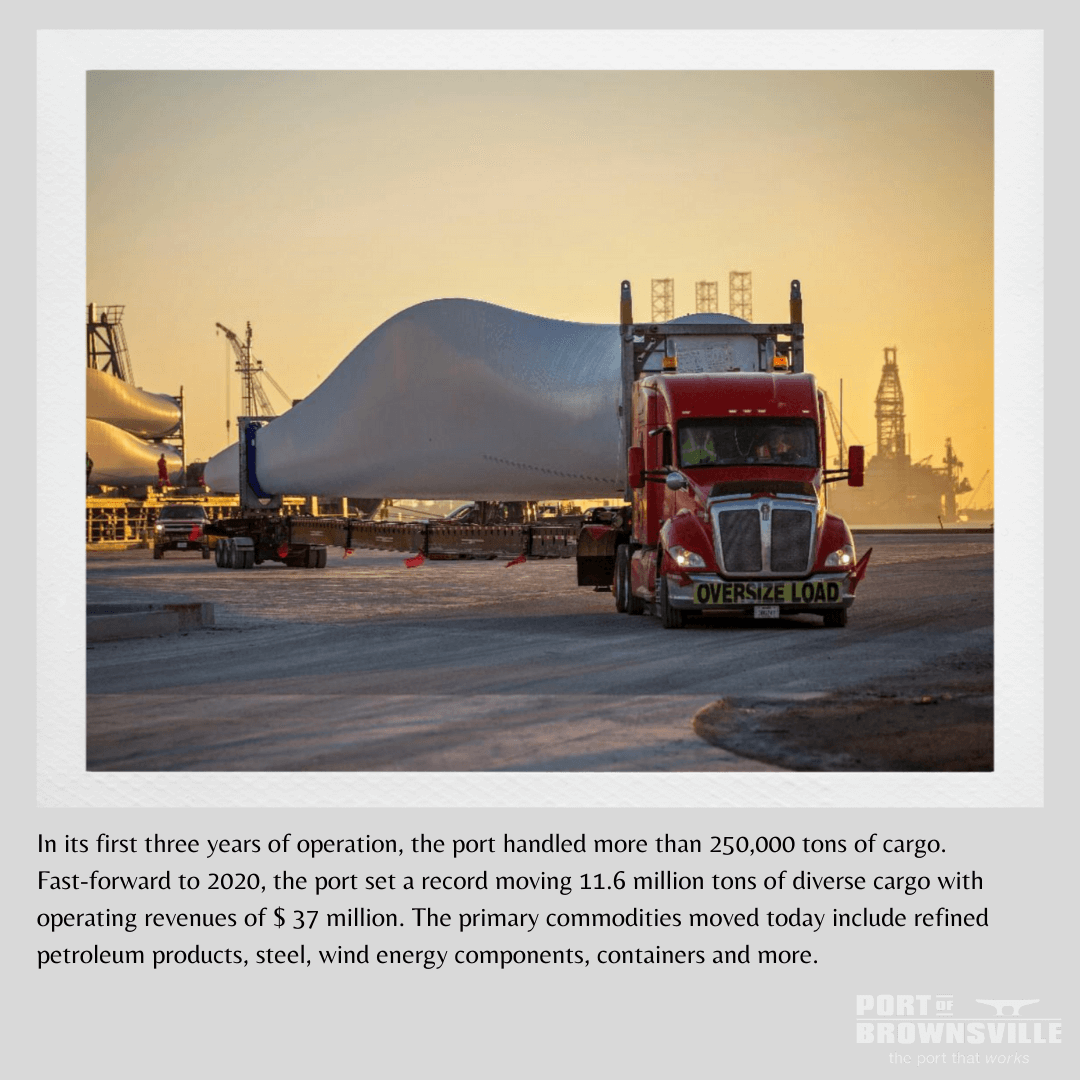BROWNSVILLE, Texas, July 2, 2021 – Everything is bigger in Texas, and that extends to our coastal waters.
Founded in 2015, the RGV Reef Project, located 13 miles northeast of South Padre Island and encompassing 1,650 acres, holds the title of largest artificial reef in the state. This endeavor has been a collaborative labor led by the non-profit organization Friends of the RGV Reef with the help from the Port of Brownsville, port tenants and other generous contributors.
Since 2016, the Port of Brownsville has provided a staging area to serve as a central base of operations for storing and transporting thousands of tons of materials used to create a complex, layered artificial reef nursery for fish in all stages of development.
“The deep-water frontage site at the port allows us to move materials cheaply,” said Gary Glick, president of Friends of the RGV Reef. “With the support of the Port of Brownsville, we’ve built the first industrial scale reef fish nursery in the Gulf of Mexico, and it will have a huge economic impact on the region that will be felt for generations.”
According to an economic impact study published in 2018 by Aaron Economic Consulting, LLC. for the South Padre Island Economic Development Corporation, fishing and diving activity on the artificial reef is expected to result in:
- 537 jobs for Rio Grande Valley residents
- $45.6M economic output generated by the reef
- $13.9M in income to RGV residents
- $3.6M in state and local tax revenues
The Burlington Northern Santa Fe (BNSF) Railway, a Class 1 service provider at the port, has donated concrete railroad ties that serve as excellent reefing materials to create habitat for hundreds of species of fish like red snapper, invertebrates and turtles. As of June 11, Friends have deployed 11,500 tons of concrete railroad ties donated by BNSF.
In October 2020, Friends thanked International Shipbreaking Limited (ISL), a premier ship recycling company at the port, for their support and volunteer efforts by naming a vessel scuttled for the artificial reef after ISL Vice President Captain Robert “Bob” Berry.
In addition to growing a hospitable habitat for marine life, the RGV Reef is expected to increase ecotourism to the area. To learn more about the RGV Reef Project, visit www.rgvreef.org.
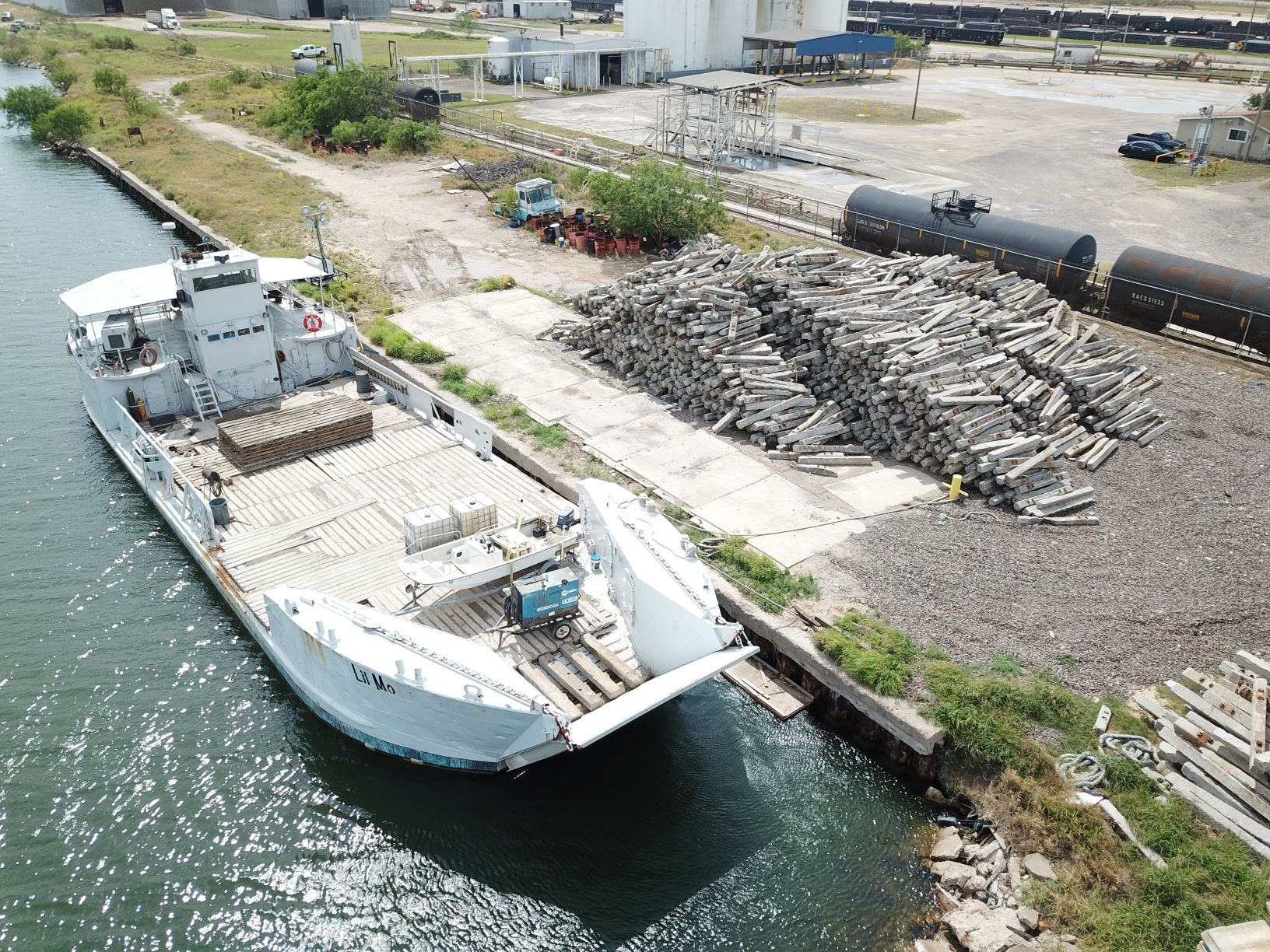
Concrete railroad ties held at this staging area at the Port of Brownsville are repurposed to create an artificial reef for the RGV Reef Project located 13 miles northeast of South Padre Island.
